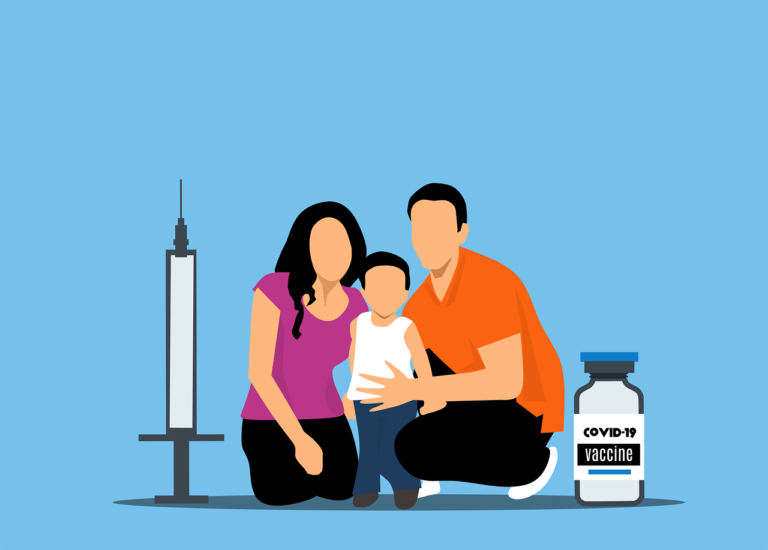Book Appointment Now

The Iowa Model of Evidence-Based Practice
The Iowa Model of Evidence-Based Practice (EBP) is a framework designed to guide healthcare professionals in integrating research findings into clinical practice to enhance quality care. Developed in the early 1990s at the University of Iowa Hospitals and Clinics, this model emphasizes a systematic, team-based approach to decision-making, focusing on improving patient outcomes through evidence-based interventions. Over time, the Iowa Model has become one of the most widely recognized frameworks for implementing EBP in diverse healthcare settings.
Get a custom paper help about Iowa Model of EBP
Order Custom Nursing Paper
Core Principles of the Iowa Model
The Iowa Model is built on several guiding principles that ensure evidence-based interventions are systematically identified, evaluated, and implemented:
- Problem-Driven and Knowledge-Focused Triggers
- The process begins with the identification of clinical issues or opportunities for improvement. Triggers can be problem-driven (e.g., rising rates of hospital-acquired infections) or knowledge-focused (e.g., new research findings or guidelines). These triggers prompt the question: “Is there evidence to improve current practice?”
- Interdisciplinary Collaboration
The model emphasizes the importance of teamwork, with input from various healthcare professionals, including nurses, physicians, researchers, and administrators. This collaborative approach ensures comprehensive evaluation and implementation. - Feasibility and Relevance
Before proceeding, healthcare teams assess the feasibility and relevance of potential evidence-based interventions. Factors such as organizational resources, staff readiness, and alignment with institutional priorities are considered. - Sustainability
The model prioritizes ongoing monitoring and evaluation to ensure the sustained integration of evidence-based changes into clinical practice.
Steps in the Iowa Model
The Iowa Model outlines a detailed and iterative process for translating evidence into clinical practice. Each step serves a specific purpose, ensuring that interventions are rigorously tested, evaluated, and adapted for optimal patient outcomes.
1. Identifying Triggers
The process begins with identifying triggers that highlight the need for change. These triggers can be problem-driven, such as clinical issues or patient outcomes requiring improvement, or knowledge-focused, such as new research findings, guidelines, or technological advancements.
Example: A hospital observes rising rates of pressure ulcers (problem-driven trigger) or adopts updated wound care guidelines (knowledge-focused trigger).
2. Forming a Team
A multidisciplinary team is formed to address the identified trigger. This team typically includes nurses, physicians, researchers, quality improvement specialists, and other relevant stakeholders. The diversity of perspectives ensures a comprehensive approach to evaluating and implementing evidence-based practices.
Key Task: Define roles and responsibilities to facilitate collaboration and decision-making.
3. Posing a Clinical Question
The team develops a focused clinical question to guide their investigation. Frameworks like PICO (T) (Population, Intervention, Comparison, Outcome) help structure the question.
Example PICO Question: “In patients with diabetes (Population), does implementing a new foot care protocol (Intervention) compared to standard care (Comparison) reduce the incidence of foot ulcers (Outcome)?”
4. Reviewing and Appraising the Evidence
The team conducts a thorough literature search using databases like PubMed, CINAHL, or Cochrane Library to gather relevant evidence. Each study is critically appraised for its validity, reliability, and applicability to the clinical question. Tools like the GRADE system or Johns Hopkins Evidence Appraisal Tool can be used for this purpose.
Key Considerations: Ensure that evidence is high-quality and directly applicable to the identified clinical issue.
5. Determining Evidence Sufficiency
The team evaluates whether the evidence is sufficient to support a practice change. If the evidence is strong and consistent, the team moves forward with piloting the change. If evidence is insufficient, further research or data collection may be necessary.
Decision Point: Strong evidence leads to action, while gaps in evidence may require additional investigation.
6. Piloting the Practice Change
The proposed intervention is tested on a small scale in a controlled setting to evaluate feasibility, effectiveness, and potential barriers. The pilot phase allows the team to identify unforeseen challenges and gather preliminary outcome data.
Example: A new fall prevention protocol is piloted in one hospital unit before hospital-wide implementation.
7. Evaluating Outcomes
The outcomes of the pilot are rigorously analyzed using predefined metrics. This step determines whether the practice change achieves its intended goals. If outcomes are positive, the intervention is prepared for broader implementation.
Key Metrics: Metrics may include patient satisfaction scores, rates of adverse events, or cost-effectiveness.
8. Implementing and Integrating the Change
Based on the pilot’s success, the intervention is implemented across relevant settings. This step involves staff training, process adjustments, and ensuring access to necessary resources. Leadership support is critical for fostering organizational commitment.
Example: A successful pilot of a hand hygiene protocol is expanded to all units, with compliance monitoring and regular feedback.
9. Monitoring and Sustaining the Change
Sustained change requires continuous monitoring to ensure adherence and effectiveness. Regular audits, performance reviews, and feedback loops help identify areas for improvement and prevent regression to previous practices.
Key Task: Develop sustainability plans, such as assigning accountability for long-term monitoring.
Applications of the Iowa Model
The Iowa Model has been widely applied to improve patient care, safety, and clinical outcomes across diverse healthcare settings. Below are detailed examples showcasing its impact in practice:
1. Reducing Hospital-Acquired Infections (HAIs)
Trigger: A hospital identifies high rates of catheter-associated urinary tract infections (CAUTIs) as a problem-driven trigger.
Steps:
- A multidisciplinary team, including infection control specialists and nurses, forms to address the issue.
- The team poses a PICO question: “Does implementing daily catheter care protocols reduce CAUTI rates compared to current practices?”
- A literature review identifies evidence supporting aseptic insertion techniques and daily catheter maintenance.
- A pilot program tests the protocol in a medical-surgical unit, yielding a significant drop in CAUTI rates.
- Following positive outcomes, the protocol is rolled out hospital-wide, with ongoing monitoring to ensure compliance.
Outcome: The intervention leads to a 40% reduction in CAUTI rates over six months, enhancing patient safety and reducing healthcare costs.
2. Improving Pain Management Practices
Trigger: New guidelines for opioid prescribing highlight the need for safer pain management practices (knowledge-focused trigger).
Steps:
- A team of nurses, physicians, and pharmacists reviews evidence-based alternatives to opioids, such as non-pharmacological interventions.
- A pilot program introduces mindfulness training and physical therapy for managing chronic pain in orthopedic patients.
- Outcome metrics, including patient satisfaction and opioid prescription rates, are evaluated post-pilot.
Outcome: The program reduces opioid use by 25% while maintaining high levels of pain control and patient satisfaction.
3. Enhancing Sepsis Management
Trigger: Rising sepsis-related mortality rates prompt a hospital to evaluate its early recognition protocols (problem-driven trigger).
Steps:
- The team reviews evidence supporting the use of standardized sepsis care bundles.
- A pilot program tests the bundle in the emergency department, including protocols for early antibiotic administration and fluid resuscitation.
- Staff receive training to recognize sepsis symptoms quickly, supported by electronic health record (EHR) alerts.
Outcome: The hospital achieves a 20% decrease in sepsis-related mortality within the first year of implementation.
4. Reducing Patient Falls
Trigger: A hospital unit identifies an increase in patient fall rates, necessitating a practice change (problem-driven trigger).
Steps:
- A team develops a PICO question: “Does implementing hourly rounding protocols reduce patient fall rates compared to standard care?”
- Evidence from systematic reviews supports the efficacy of hourly rounding.
- A pilot program on one unit involves staff training and the use of checklists for hourly rounding.
- Fall rates are measured pre- and post-pilot, showing a significant decline.
Outcome: The protocol is adopted hospital-wide, with fall rates reduced by 35% across all units.
5. Streamlining Wound Care Practices
Trigger: Updated guidelines on pressure ulcer prevention provide a knowledge-focused trigger.
Steps:
- A wound care team reviews evidence supporting the use of high-quality support surfaces and moisture barrier creams.
- A pilot program tests the new protocols in the intensive care unit (ICU).
- Outcomes include a reduction in pressure ulcer incidence and improved patient comfort scores.
Outcome: The protocols are implemented across all ICUs, leading to a 50% reduction in pressure ulcers over 12 months.
Strengths of the Iowa Model
- Structured Framework: The step-by-step process provides clarity and ensures consistency in implementing EBP.
- Interdisciplinary Approach: Collaboration fosters diverse perspectives and comprehensive solutions.
- Focus on Sustainability: Regular evaluation ensures long-term integration of changes.
- Adaptability: The model is versatile, applicable to various clinical settings and issues.
Limitations of the Iowa Model
- Resource-Intensive: The model requires significant time, effort, and interdisciplinary collaboration, which may be challenging in resource-constrained settings.
- Dependence on Organizational Readiness: Successful implementation relies on institutional support, including leadership buy-in and staff engagement.
- Evidence Availability: The model’s effectiveness depends on the availability of high-quality evidence, which may be limited for certain clinical questions.
The Iowa Model of Evidence-Based Practice is a powerful tool for promoting quality care through the systematic integration of research findings into clinical practice. By addressing clinical problems and leveraging new knowledge, the model ensures that healthcare interventions are grounded in evidence and tailored to patient needs. While its implementation requires commitment and resources, the model’s structured approach, interdisciplinary focus, and emphasis on sustainability make it an invaluable framework for improving healthcare outcomes. As the healthcare landscape continues to evolve, the Iowa Model remains a cornerstone of evidence-based practice, fostering innovation and excellence in patient care.
References
- Melnyk, B. M., & Fineout-Overholt, E. (2019). Evidence-Based Practice in Nursing & Healthcare: A Guide to Best Practice (4th ed.). Wolters Kluwer.
- Titler, M. G., et al. (2001). The Iowa Model of Evidence-Based Practice to Promote Quality Care. Critical Care Nursing Clinics of North America, 13(4), 497–509. https://doi.org/10.1016/S0899-5885(18)30017-0
- White, K. M., & Spruce, L. (2015). Perioperative nursing leaders implement evidence-based practice using the Iowa Model. AORN Journal, 101(3), 323-334. https://doi.org/10.1016/j.aorn.2014.09.017
- Stevens, K. R. (2013). The impact of evidence-based practice in nursing and the next big ideas. Online Journal of Issues in Nursing, 18(2), Manuscript 4. https://doi.org/10.3912/OJIN.Vol18No02Man04







